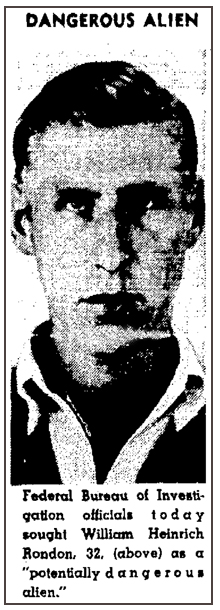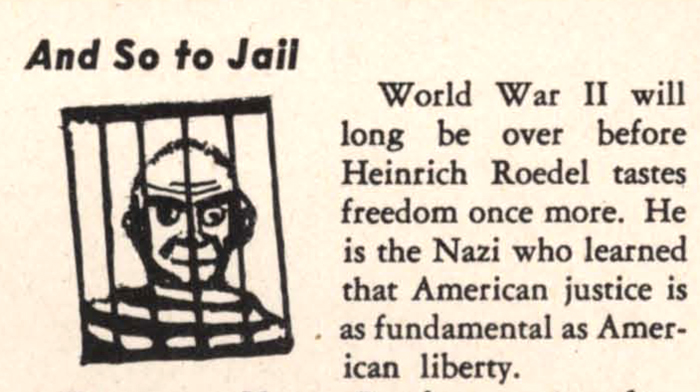Lincoln Cushing
[Originally published in Kaiser Permanente's "History of Total Health" 11/25/2014, republished here 4/18/2022]
 Aside from a couple of remote Alaskan
islands, the United States was never invaded during World War II and did not suffer the
devastation of military combat. However, it was certainly targeted.
German U-boats roamed the East Coast, sinking freighters. On May
5, 1945, six civilians were killed in Oregon by a Japanese balloon bomb
that rode the jet stream all the way from Japan. West Coast civilians
of Japanese descent were sent to “relocation centers,” and German
citizens perceived as enemy aliens on the East Coast were interned.
Aside from a couple of remote Alaskan
islands, the United States was never invaded during World War II and did not suffer the
devastation of military combat. However, it was certainly targeted.
German U-boats roamed the East Coast, sinking freighters. On May
5, 1945, six civilians were killed in Oregon by a Japanese balloon bomb
that rode the jet stream all the way from Japan. West Coast civilians
of Japanese descent were sent to “relocation centers,” and German
citizens perceived as enemy aliens on the East Coast were interned.Between January 1940 and February 1943 the FBI received more than 7,000 reports of sabotage; investigations reduced that number to 558 actual instances of technical sabotage to industrial facilities. Yet there were only two confirmed acts of sabotage on U.S. soil involving Axis sympathizers. One was at the Kaiser Richmond shipyards in California: Heinrich Roedel was convicted of “attempted sabotage in time of war” on December 19, 1942, after a jury trial.
The first story on this case appeared in an article in the Oakland Tribune, December 15, 1942:

Heinrich Roedel, alias Rondon, 33, German enemy alien, went on jury before Federal Judge A. F. St. Sure on charges of sabotage. He was indicted by a Federal Grand Jury in San Francisco last month after pleading not guilty as the saboteur who attempted to burn a Richmond shipyard warehouse containing fittings valued at $500,00…
Roedel, a San Quentin parolee, escaped from Richmond Shipyard No. 3 last July 28 after William H. King, a guard, discovered him touching a match to two packages of oakum in the warehouse, it is alleged. According to the F.B.I., King, unarmed himself, grappled with Roedel and knocked pistol from his hand, but was unable to prevent his escape, arrested in Oakland the next day when an unidentified woman tipped the police as to his whereabouts after seeing his picture in the Tribune.
Previously, Roedel had been paroled from San Quentin April 23, after serving part of a “receiving stolen goods” sentence. He then worked for two months as a shipfitter's helper in the shipyards, but on May 23 the overnment ordered him interned at Sharp's Park as an "enemy alien." The next day, during a trip into San Francisco, Roedel duped a camp guard and escaped.
Four days later he returned to the shipyards during the early morning, where King detected him as he attempted, according to the charges, to destroy the warehouse by fire.
Roedel lived in Germany from 1930 to 1934, Federal officers said. He was deported from the United States once before 1930 for illegal entry, but came back again in 1936.
The weekly Kaiser Richmond shipyard magazine Fore ‘n’ Aft carried this version of the story in their December 31, 1942 issue, revealing more details:
World War II will long be over before Heinrich Roedel tastes freedom once more. He is the Nazi who learned that American justice is as fundamental as American liberty. Known as "Henry Rondon," a steamfitter helper at Richmond Shipyard Number Two, the acknowledged saboteur tried to set fire to a yard warehouse last July, was caught, escaped, was brought in once more, and last week sentenced to 30 years in a federal penitentiary.
Testimony was given at the trial by John Wibberley, chief investigator for Yard Two, who made a tireless investigation into the case, and by William Green, who fought with the enemy alien as he attempted to destroy the warehouse. Green, at the time a guard, is now an electrician helper on graveyard shift.
Robert H. Moran, FBI agent, with the cooperation of the special investigators of the plant police, uncovered a criminal background which left no loophole for the saboteur. Originally sentenced to a 30-year term in Germany for destruction of public property, Roedel was set free to become a storm trooper.
Sent to the United States for the express purpose of sabotage, he jumped ship at San Diego. He was first arrested by Wibberley at the request of immigration officials for illegal entry into the country.
Because of wartime press censorship and other security cautions, these cases received very little publicity. Besides Roedel, the other case involved a German national named Eitzel in Baltimore who damaged 37 Martin bombers.
In 1950 Roedel appealed the United States District Court for the Northern District of California (Southern Division), blaming his lawyer, James B. O'Connor, for giving him bad advice. However, the court determined that he’d received “diligent and effective representation” and denied his appeal.
Roedel’s fate after his failed appeal remains a mystery. No further mention of him appears in the public record.
RETURN to Docs Populi / Documents for the Public
